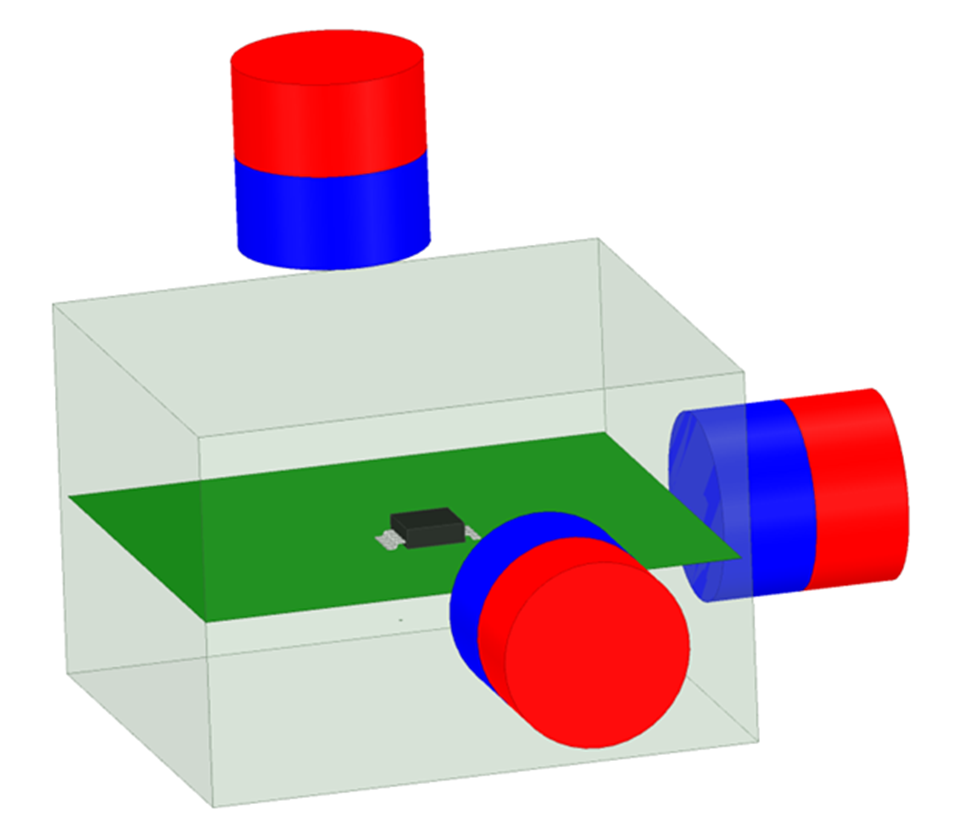SLYS045A June 2021 – September 2021 TMAG5273
PRODUCTION DATA
- 1
- 1 Features
- 2 Applications
- 3 Description
- 4 Revision History
- 5 Pin Configuration and Functions
-
6 Specifications
- 6.1 Absolute Maximum Ratings
- 6.2 ESD Ratings
- 6.3 Recommended Operating Conditions
- 6.4 Thermal Information
- 6.5 Electrical Characteristics
- 6.6 Temperature Sensor
- 6.7 Magnetic Characteristics For A1
- 6.8 Magnetic Characteristics For A2
- 6.9 Magnetic Temp Compensation Characteristics
- 6.10 I2C Interface Timing
- 6.11 Power up & Conversion Time
- 6.12 Typical Characteristics
- 7 Detailed Description
-
8 Application and Implementation
- 8.1 Application Information
- 8.2 Typical Application
- 8.3 What to Do and What Not to Do
- 9 Power Supply Recommendations
- 10Layout
- 11Device and Documentation Support
- 12Mechanical, Packaging, and Orderable Information
Package Options
Mechanical Data (Package|Pins)
- DBV|6
Thermal pad, mechanical data (Package|Pins)
Orderable Information
8.2.1 Magnetic Tamper Detection
Given their susceptibility to magnetic tampering, electricity meters often include magnetic sensors designed to detect external magnetic fields and take appropriate actions, such as disconnecting services to the electricity meter or applying a penalty fee for tampering. Figure 8-8 shows that magnetic tampering can result from a permanent magnet in any of the three orientations. Another form of magnetic tampering can be generated through an external coil powered from AC supply mains. The TMAG5273 offers flexible operating modes and configuration of three independent Hall-sensors to detect tampering.
 Figure 8-8 TMAG5273 Magnetic Tamper Detection
Figure 8-8 TMAG5273 Magnetic Tamper Detection Figure 8-9 TMAG5273 Application Diagram for Tamper Detection
Figure 8-9 TMAG5273 Application Diagram for Tamper Detection